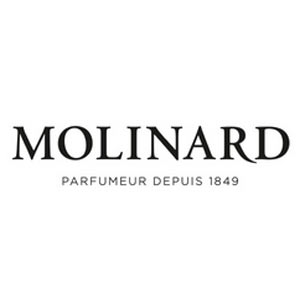- Molinard perfumes and colognes:
Country:France
Main activity:Fragrances
Brand website:link
Niche designer
Molinard is a French perfume house founded in 1849 in Grasse, a region in the south of France renowned as the birthplace—and still the cradle—of the modern perfume industry. As one of the oldest family-owned enterprises with an unbroken legacy, it remains entirely family-run to this day.
Initially, Molinard specialized in crafting Eaux de Fleurs (flower-scented waters) and Eaux de Cologne, selling them through its small store in the heart of Grasse.

In 1860, the house rose to prominence with two new fragrances: "Jasmin" and "Rose." Both were housed in exquisite crystal bottles designed and produced by Baccarat, a strategy later replicated for the perfumes "Mimosa" and "Violette." Notably, versions of three of these soliflore (single-flower) scents are still in production by Molinard. It is also rumored that Queen Victoria counted herself among the devotees of Molinard's Eaux de Cologne.
1900 marked a significant expansion for Molinard, as it acquired an old perfume factory whose structure was designed by Gustave Eiffel—the visionary behind Paris' iconic Eiffel Tower. This site continues to serve as the company's headquarters. The expanded space enabled Molinard to open a formal showroom, adorned with a splendid collection of 17th and 18th-century furniture, dedicated to receiving distinguished clients. In the early 20th century, both the elegant showroom and the house's captivating fragrances became favorites among affluent English and Russian travelers.
1921 proved to be a pivotal year for Molinard, witnessing the creation of two products that remain popular to this day. One was Habanita, initially developed as a cigarette flavoring/fragrance before evolving into a full-fledged perfume in 1924, which would go on to earn its place as one of the greatest fragrance creations in history. The other milestone was the launch of Molinard's "Concréta"—the world's first solid perfume compacts, which integrated natural flower wax as a key fragrance component.
Bottle design has long been a cornerstone of Molinard's aesthetic identity. In the 1920s, renowned bottle designer Viard crafted a series of beautiful scent containers for the house. By 1930, building on the success of Habanita and Concréta, Molinard collaborated with master glassmaker René Lalique, who designed and signed the striking bottles forIles d'OrandMadrigal(1930) andLe Baiser du Faune(1932). Later in the 1930s, Baccarat's crystal workshops also contributed to Molinard's legacy by creating bottles for several of its fragrances. This tradition of exquisite packaging endures today, exemplified by the ornate vessels ofMolinard de Molinardand the current iteration of the Habanita bottle.
Like the rest of France, Molinard faced immense challenges during World War II. In a gesture of compassion, the company developed "the Prisoner's parcel" to bring comfort to French prisoners. It persevered through the turmoil and celebrated its 100th anniversary in 1949.
Today, Molinard's product range encompasses perfumes, soaps, body care items, candles, and aromatherapy products. The company operates stores and offers tours at its locations in Grasse, Nice, and Lille, while also distributing its products through secondary retailers across France and worldwide. In 2009, to mark its 160th anniversary, the esteemed house launched a commemorative perfume,160—a floral scent that blends classic and modern notes. Presiding over Molinard today is Jean-Pierre Lerouge-Benard, the fourth generation of his family to lead the company.
Molinard's fragrance portfolio, as documented in our database, comprises 128 perfumes. As an established perfume house, its earliest creation dates back to 1849, with the most recent addition released in 2024. Among the perfumers who have contributed to its fragrances is Mathieu Nardin.
